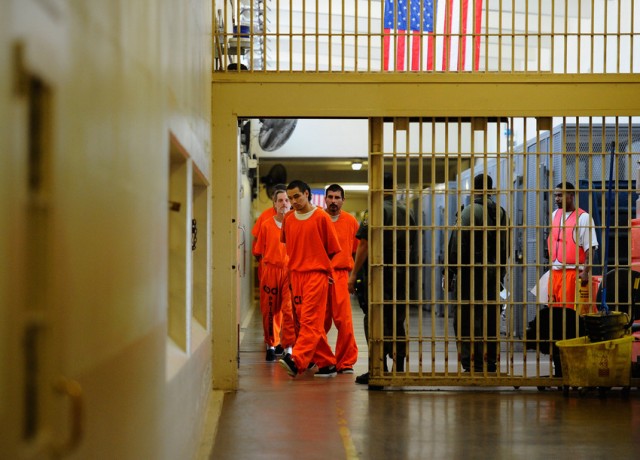
The three federal judges overseeing the reduction of California's prison population say state officials and inmates' lawyers have failed to reach a long-term agreement to deal with overcrowding — so the court will decide for them.
The three-judge panel has ordered the state to cut the number of inmates in the state's prison's to 137.5 percent of their design capacity — about 112,000 prisoners in all. The California Department of Corrections and Rehabilitation is under an April 18 deadline to comply with the panel's order, but has sought a two-year extension. The state has been negotiating with inmate lawyers to come up with a long-term plan to present to the court, which had given them until Friday to find a mutually agreeable solution.
The three judges — U.S. District Court Judges Thelton Henderson of San Francisco, Lawrence Karlton of Sacramento and Judge Stephen Reinhardt of the 9th U.S. Circuit Court of Appeals — issued a brief order giving the two sides 10 days to file their proposals for meeting the prison inmate limit. Based on those proposals and brief responses from each side, the judges said they'll issue a decision on the state's request for an extension.
The language in today's order (embedded below) can be read as impatient, if not exasperated:
This Court has repeatedly extended the meet-and-confer process, and by virtue thereof the date for the State’s compliance, in hopes that the parties could reach agreement on how this Court can best ensure a durable solution to the prison population problem as required by our orders of August 4, 2009, June 30, 2011, and June 20, 2013. It now appears that no such agreement will be reached, and the Court therefore intends to issue an order within the next 30 days as to whether it will grant, deny, or grant in part and deny in part the State’s request for an extension of time in which to comply with those orders.
The panel also warned that the proposals from each side should be practical and suited to attaining lasting compliance with the prison population cap:
These proposed orders shall not be statements of the parties’ ultimate wishes but, rather, shall include those terms, and only those terms, that the parties believe are best suited to achieve durable compliance with this Court’s orders to maintain a prison population of no more than 137.5 percent design capacity.
In a statement, Corrections and Rehabilitation spokeswoman Deborah Hoffman said, “We are hopeful the court will recognize that the state has made significant reforms to our criminal justice system and will allow us an extension so we can build upon these landmark reforms.”